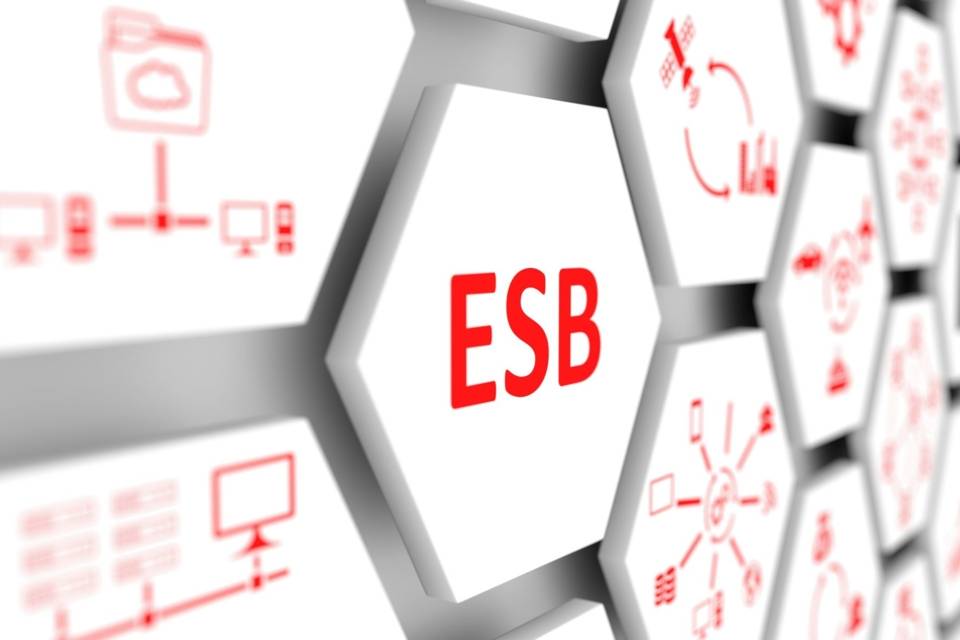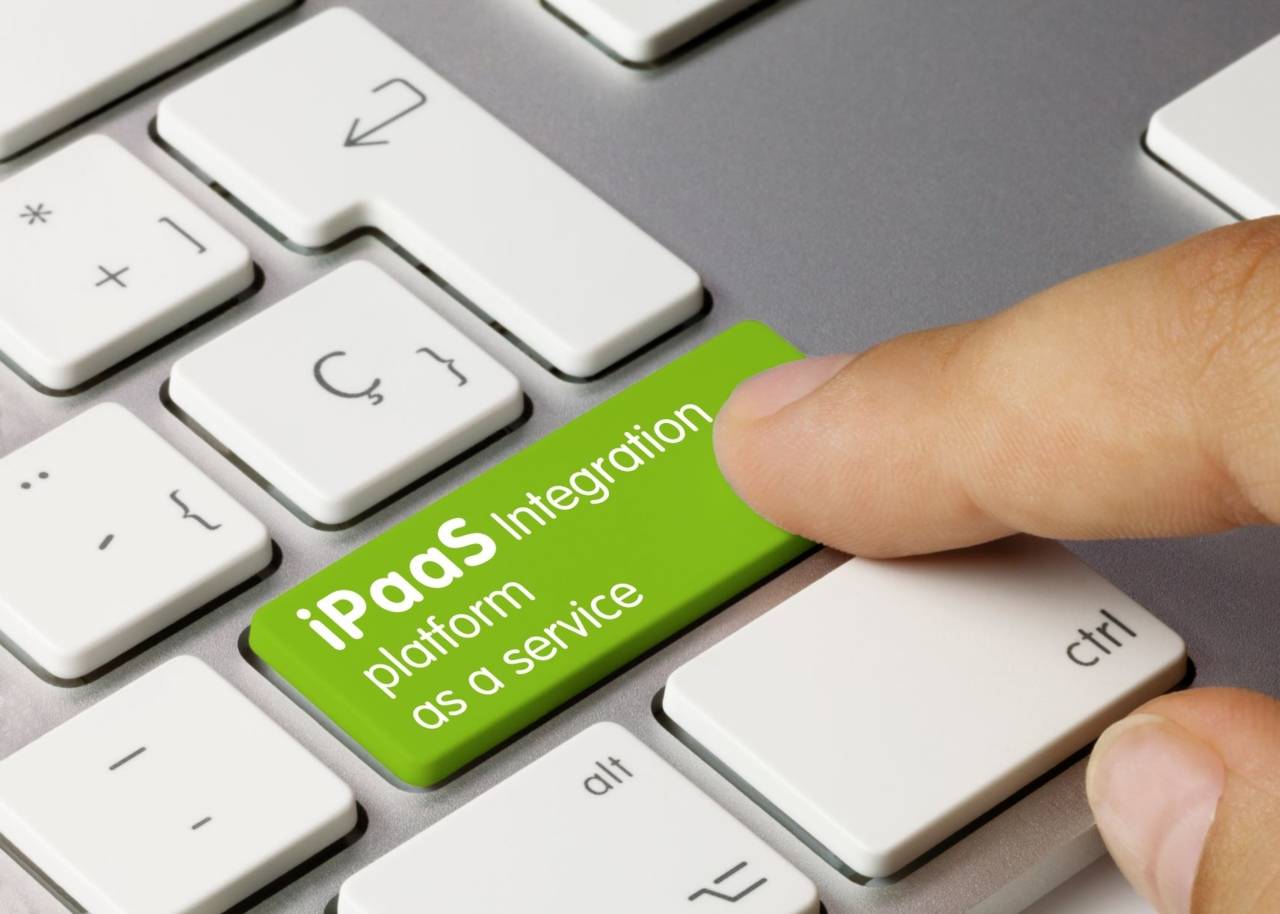iPaaS Explored
Software integration is one of the biggest challenges modern B2B organizations face. It is also an area where there is great potential for businesses to develop a competitive advantage. In the era of omnichannel digital experiences, connecting software and channels to create a seamless and streamlined customer journey is critical. Doing so efficiently and cost-effectively, even more so.
iPaaS platforms are a solution to this problem. And they are quickly becoming one of the preferred means of facilitating integration and connecting diverse digital business systems.
Here, we look at what iPaaS solutions are, how they work, and why they are so crucial for B2B organizations pursuing a long-term digital transformation strategy.
What is iPaaS?
Let’s begin by breaking down the initialism. iPaaS stands for Integration Platform as a Service. It refers to solutions that act as connecting platforms for a wide range of software and systems.
Consider the average B2B company. They usually run a dizzying array of systems. And in the age of omnichannel, they cannot afford operational or data silos. They need to integrate and connect everything.
iPaaS solutions facilitate those connections.
Comparing iPaaS to SaaS helps us understand what iPaaS solutions achieve and how they evolved. SaaS companies sell software solutions that enable B2B organizations to streamline operations, deliver superior services, and grow their business.
However, SaaS products are rarely made specifically to meet one company’s needs. So they do not do everything a business wants them to. Instead, the organization has to combine the software solution with other tools (additional software, plugins, etc.) to create a bespoke solution that works for them.
The problem is that this combination of software, widgets, add-ons, and plugins quickly becomes remarkably complex and difficult to manage. The individual components do not always work well together, either.
As B2B digital systems have grown increasingly complicated, the demand for solutions that bypass that complexity has increased. And that is where integration Platform as a Service comes in.
How does iPaaS work?
iPaaS platforms work by providing a well-defined structure for integrations. In other words, they establish the rules and mechanisms by which we link individual software solutions and act as a central hub for all your connected software.
With integration Platform as a Service, the platform designers define what types of connections are possible. This can be via APIs, pre-built connectors, or more niche connectors. iPaaS users then connect their software to the platform via these mechanisms.
Once connected, the user can view all the connections, as well as data and operations contained within linked software, via the iPaaS platform. They can also edit, share, and publish data from the platform, streamlining service provision and eliminating silos.
The benefits of iPaaS

1. Intuitive interfaces
Good integration Platform as a Service solutions are built around intuitive interfaces that ensure users can make the most of all the software’s features. Rather than working with a whole range of different interfaces (one for each piece of software you use), you only have to learn and engage with one. This saves time, is more efficient, and makes onboarding and training much easier.
2. Scalability
iPaaS solutions facilitate quick and easy growth by enabling you to integrate new software solutions into your B2B digital systems as and when required. In contrast to other integration solutions, the process is remarkably simple and requires little time to achieve. Considering the way B2B organizations are relying on more and more software to facilitate digital transformation, this makes them one of the most valuable tools at your disposal.

3. Integration standardization
With other approaches to integration, you usually have to tailor the connection to the specific needs of the software you are connecting. This means there is no standard integration process. With integration Platform as a Service, there is a standardized integration process. All integrations are handled in the same way, using the same process. B2B organizations do not need to create custom connections whenever they want to incorporate a new solution.
4. One solution to rule them all
It is so much easier when everyone within an organization is working from the same page. iPaaS solutions act as a single source of truth from which employees can draw information and know that it is accurate, up-to-date, and consistent for everyone in the business. Without this single, centralized solution, employees often extract information from diverse sources, increasing the likelihood that it is inaccurate or inconsistent.
5. Eliminate silos for true omnichannel operations
In the B2B market, silos are the enemy. If you are to offer world-class digital experiences, you must ensure that you have easy access to all the data at your disposal. There can be no obstacles to the free flow of information, customers, or employees between channels. By connecting all your software solutions to a centralized platform, you eliminate silos and guarantee a fully omnichannel system.
6. Improved security
Digital security is a significant concern for any B2B organization that recognizes how damaging breaches can be to its reputation. A single, serious data breach could spell disaster for your brand and irreparably damage your existing customer relationships. Though iPaaS platforms are by no means dedicated security solutions, they do make it easier to identify threats and make changes across the entire system.
7. More accurate, more efficient
One of the most overlooked benefits associated with iPaaS is improvements in workflow efficiency. Employees can achieve everything via a single interface, streamlining and simplifying workflows. Rather than flicking between screens and working with multiple interfaces, employees can stick to a single screen and work quickly, efficiently, and accurately
The Drawbacks of integration Platform as a Service
There are very few drawbacks to iPaaS platforms. If we had to highlight a disadvantage, it would be that introducing this technology involves introducing yet another piece of software into your B2B digital systems.
However, we believe this cannot truly be considered a drawback. If your business is interested in an iPaaS platform, it is because you recognize that the future of B2B is tied to digitalization and making the most of digital solutions. In other words, you understand that new software integrations are necessary and integral to success.
This potential drawback is also negated by the fact that new iPaaS solutions are being introduced to existing B2B solutions, such as Ibexa DXP. But more on that later.

iPaaS vs. PaaS - What is the difference?
What is the difference between iPaaS and PaaS? Everything.
PaaS stands for Platform as a Service. There is no integration. But what does that mean in practical terms?
PaaS solutions are tools that developers use to design and build their own applications. They provide everything a development team needs to create their own solutions but are not particularly well suited to handling integrations. The team building the applications may be able to facilitate some integrations using the PaaS tools. But it is not what the solution is specifically designed to do.
In contrast, integration Platform as a Service solutions are purpose-built to integrate different solutions. Though there is little to distinguish the names, there is a significant distinction between what the solutions achieve.
The difference a single ‘i’ can make!
iPaaS vs. ESB - What is the difference?
ESB stands for Enterprise Service Bus. An ESB is a set of rules that allows software to communicate with one another by placing a bus between them. Each solution communicates with the bus rather than the other solution, and the bus passes on the data.
ESBs were also a response to increasingly complex integrations. Previously, developers created custom integrations that allowed pieces of software to communicate with one another directly. This is not a problem, while the system remains relatively simple.
However, as business systems grow in complexity, these custom connections become weaknesses. As the custom code is decentralized and contained within a diverse range of solutions, it is difficult to troubleshoot or fix when things go wrong. Instead of looking at a single central connector when searching for the issue, you have to pull up code from all over the place. It is time-consuming and inefficient.
ESBs act as these connectors. They help organizations decouple software solutions by ensuring their coding is not dependent on one another while still facilitating quick and clear communication.

So what distinguishes iPaaS from ESBs?
Arguably the biggest distinction is that iPaaS solutions are cloud-based, and ESBs are an on-premises technology. Scalability is also a big concern. integration Platform as a Service solutions can scale extraordinarily quickly as they are designed to facilitate new integrations almost instantly and can support a serious number of connections. ESBs are slow to scale. Creating and integrating a new piece of software with an ESB often requires considerable work.
Finally, iPaaS and ESBs also differ in terms of accessibility. As integration Platform as a Service is a cloud-based solution, it can offer access to multiple users in several locations. As ESB is an on-site piece of hardware, only on-location users can make the most of the technology.
Best practices for implementing iPaaS
Here are our top four tips for ensuring your implementation goes smoothly.
1. Create a data integration plan
Before you introduce an iPaaS solution, you must ensure you have a comprehensive data integration plan in place. This plan should cover what you want to achieve with iPaaS implementation, what type of data you want to integrate into the system, where this data is stored, and how you want to manage data communication.
Once you have created a plan, you will better understand what kind of iPaaS solution you require.
2. Select the right iPaaS solution
Not all integration Platform as a Servicesolutions are the same. Some are designed to achieve specific integration goals and assist certain types of businesses. Others take a more general approach. You also need to think about whether you need a standalone iPaaS solution or if you would prefer this functionality in a broader technology, such as a DXP.
3. Configure your iPaaS solution
Many iPaaS solutions are highly configurable. Usually, you can dictate what data is shared (you may not want to share all the data from a specific database) and how it is shared. Do you want real-time synchronization? Or is it better to trigger one-way transmission when particular actions are performed?
4. Keep your data clean
Finally, conducting regular manual checks on your data is a good idea. This will involve eliminating duplicates, correcting information, and removing unnecessary information. While iPaaS platforms generally handle a lot of the management side of things, they will not catch everything, and you should keep an eye on your databases to ensure everything is working as it should.
Ibexa Connect: integration Platform as a Service and Ibexa DXP
We created Ibexa DXP to help B2B organizations design, create, and implement first-rate digital experiences for their customers. Easy integration has always been at the heart of what we do. Ibexa DXP already benefits from multiple APIs, including REST and GraphQL, as well as several extension points.
In the Ibexa DXP v4 release, we take that to the next level by introducing Ibexa Connect, the embodiment of the modern iPaaS solution. It makes mapping integrations easy and intuitive by implementing a clear and easy-to-use drag-and-drop interface and boasts more than 1000 native integrations.
With Ibexa Connect, the emphasis is on simplicity and functionality. We have created a system that aims to simplify your software environment. It takes a low-code approach that removes technical obstacles to the process and ensures you benefit from superior workflow automation, seamless data sharing, and more information on which to base critical business decisions.
Our research shows that Ibexa Connect can reduce development time for integrations by as much as 90%, ensuring you can focus on those aspects of your business that add value.
To learn more about what Ibexa DXP can do for your business, head to our dedicated DXP product page. Alternatively, take a deeper dive into what Ibexa Connect means for your business and the wider Ibexa DXP solution by checking out our Ibexa DXP ebook.

Learn More
Ibexa Connect
Visit our dedicated product page to learn how Ibexa Connect, our iPaaS can help you automate all your business processes and connect business applications with enterprise-grade governance, scalability, and no coding experience?
Learn More
Ibexa Connect
Visit our dedicated product page to learn how Ibexa Connect, our iPaaS can help you automate all your business processes and connect business applications with enterprise-grade governance, scalability, and no coding experience?

